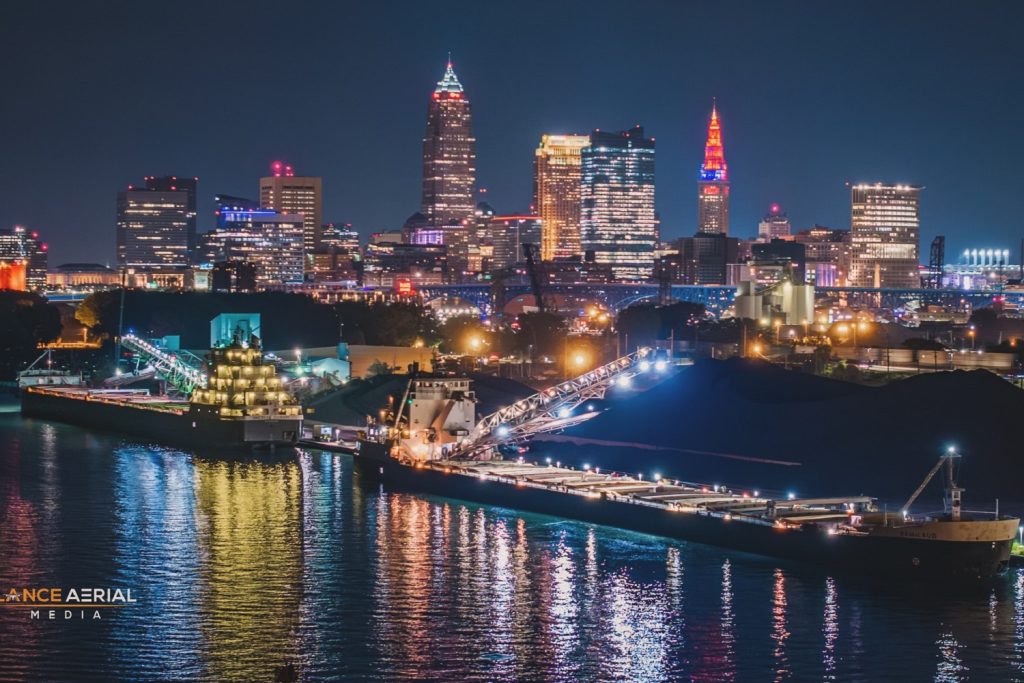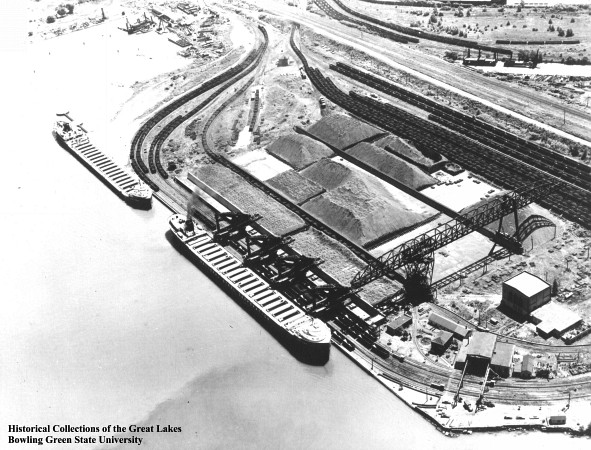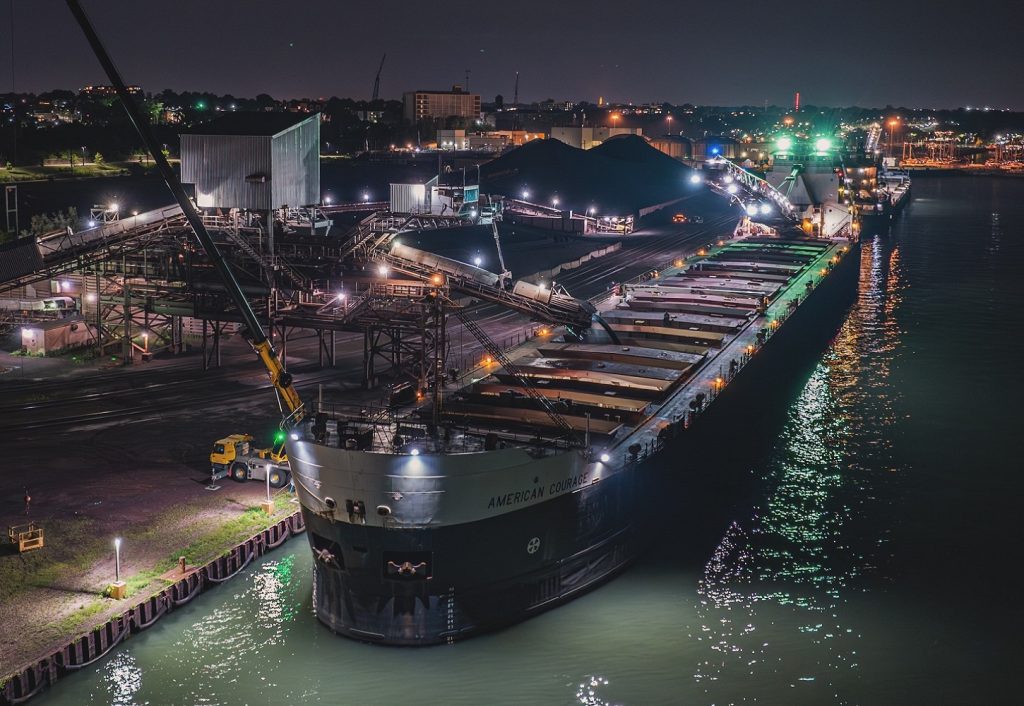
On July 12, two ships were working at the Cleveland Bulk Terminal on Whiskey Island, just west of Downtown Cleveland. Although different types of aggregates can be loaded and unloaded here, iron ore is unloaded from larger ships through a conveyor tunnel to smaller ships and then sent upriver to Cleveland Cliffs’ steel-making facilities. That conveyor has reached the end of its useful and must be rebuilt (Lance Aerial). CLICK IMAGES TO ENLARGE THEM.
Funding to aid ore conveyor renovation
Last month, the Cleveland-Cuyahoga County Port Authority awarded nearly $1 million for design work to reconstruct the iron ore conveyor system at the Cleveland Bulk Terminal on Whiskey Island. This month, the Port of Cleveland got a big chunk of the funding necessary to carry out the reconstruction work over the next two years.
Port officials announced today that the port authority has been awarded $5 million from the state to help fund the modernization of the Cleveland Bulk Terminal’s iron ore conveyor system. This tunnel system, described as “vital” by port officials, transfers iron ore pellets into a facility through connected conveyor belts that moves the cargo onto a river-class vessel that takes the material to upriver steel manufacturing businesses.
Port CEO William Friedman thanked both the Ohio House and Senate Finance Committees and the entire Cuyahoga County delegation for championing the funding, which was approved at the end of June by the Ohio Legislature as part of its $4.2 billion capital budget.
“We are extremely fortunate to have secured such a significant grant in the highly competitive capital budget,” Friedman said in a written statement. “Our local delegation — including State Sen. Matt Dolan (R-Chagrin Falls), finance committee members and Governor Mike DeWine’s administration truly understand and appreciate the financial impact of this iron ore facility.”
The Port acquired the iron ore terminal in 1997 from the Consolidated Rail Corp. (Conrail) and since then has invested millions of dollars in the bulkhead and material handling equipment and has moved away from old technology to improve the site’s efficiency, increase its throughput capacity and implement more environmentally sustainable best practices.
“It is vital for steel production along the Cuyahoga River, which helps underpin our Northeast Ohio economy,” Friedman added.
Port officials noted the state’s grant will “help” fund the project. In an e-mail to NEOtrans, Friedman said that a hard estimate cost of reconstructing the ore conveyor is not yet available. “We do not have an engineer’s estimate of cost yet,” he said.
The amount the Port of Cleveland awarded last month to design work for the ore conveyor’s reconstruction was $925,000. Architectural and engineering costs represent a wide range of a public works project’s conceptual construction estimate, from 7-25 percent of the total cost. That suggests the ore conveyor’s reconstruction might cost anywhere from $4 million to $13 million.
The original section of the mechanical conveyor system was relocated from Lorain in 2003 and includes a concrete tunnel under the stockpiled taconite on the dock. The tunnel and conveyor system were extended in 2021, which allowed for the blending of taconite and greater capacity. But now, the original section of the conveyor system is near the end of its life and in need of major rehabilitation.
“The tunnel structure itself is good, but the steel and mechanics that hold up the conveyor are are in poor condition,” said Matt Wenham, the Port of Cleveland’s chief of engineering and capital development.

Overhead view of the Cleveland and Pittsburgh Railroad ore docks on Cleveland’s Whiskey Island in 1954, today called the Cleveland Bulk Terminal and owned by the Port of Cleveland. Although the four Hulett unloaders continued to be used until the 1990s to unload ships, the Great Lakes-Northeast steelmaking region fell into decline in the 1970s (BGSU).
“We are watching it closely for maintenance and hope to start construction in January as we can only shut down this tunnel and conveyor for six weeks a year, between early January and late February, when the Soo Locks connecting Lakes Superior and Huron are shut down,” he said.
Because of this, reconstruction at the Cleveland Bulk Terminal is expected to take at least a couple of years. The Port expects to have two shifts of construction for six weeks for two years.
In recent months, at the direction of the Port of Cleveland, Northern Ohio Scrap of Euclid removed disassembled pieces of two historic Hulett Ore Unloader machines from their storage at the Cleveland Bulk Terminal. The port needed them out of the way so the terminal could be developed.
Originally, four Huletts were installed at the terminal, then known as the Cleveland & Pittsburgh (C&P) Railroad Ore Dock, in 1912 to unload ore ships. Shut down in 1992, all four were taken down in 1999. Two of the machines were scrapped at the time and two more were set aside on the terminal in pieces. Initially intended for just five years, the Huletts’ stay at CBT stretched into 24 years.
END




